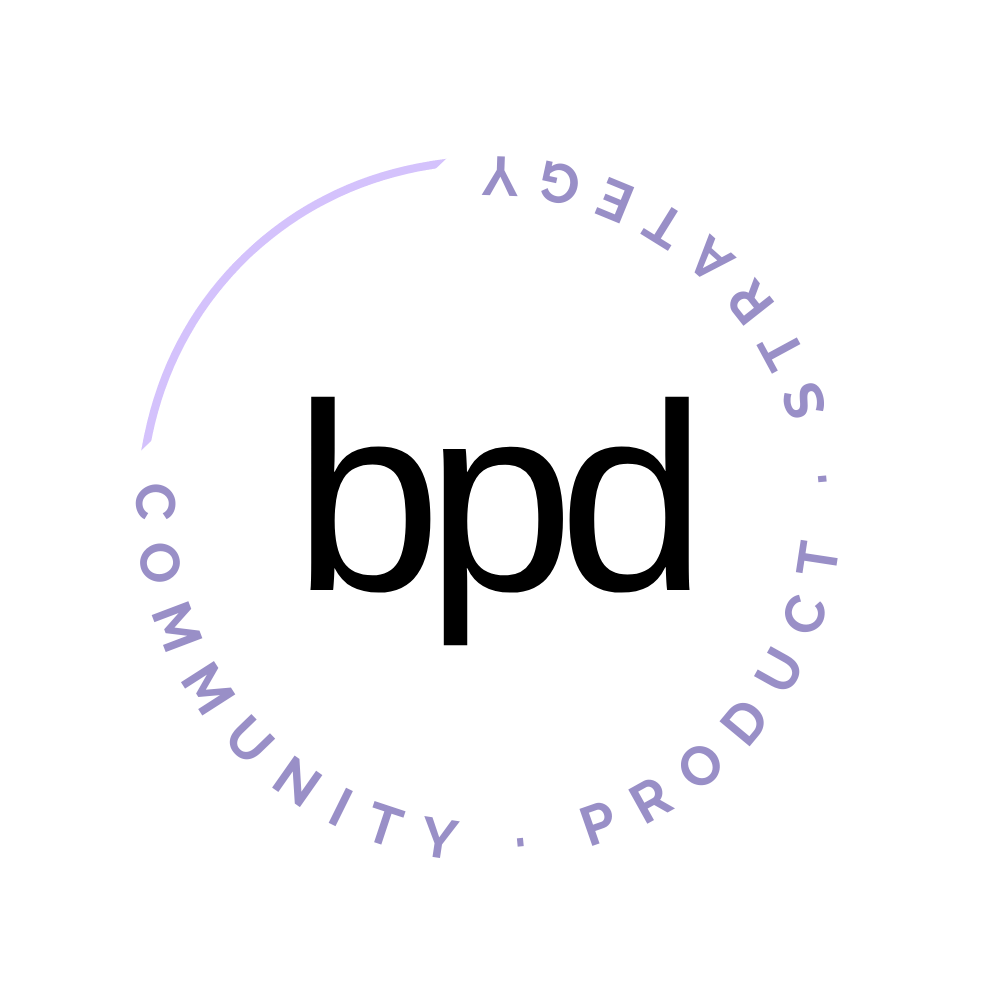#127 The Voice Of Your Member – A Guide To 1:1 Interviews
We're wrapping up research for one of our program clients to refine their product strategy, and we're collaborating with Cheyenne Buttrey to share our research insights + develop the "voice of their member".
This is some of the most high-leverage work we do. And I feel like there is a lot of buzz around this lately with people sharing their experience and strategies.
But what people don't realize is that it's really easy to do it "wrong".
Here's what I mean:
We pitch to get validation – "So I'd love to run this idea by you!" or "Would you be interested in XYZ product?", which just results in confirmation bias
We don't go deep enough – We take answers at face value and don't get at the deeper why or root cause of the problems they're sharing
We ask the wrong questions – we ask people what they would do, instead of what they have done... which results in highly aspirational answers that aren't real
At Affinity we have trained researchers that facilitate member 1:1s for our clients… and today I'm giving you all of our 1:1 interview tips!
Let’s get into it –
I was listening to Sam Vander Wielen on the Growth In Reverse podcast share how she did 1200 (!!!) free calls with her community, and how the transcripts and insights from those calls have helped her shape the voice of her member over time.
Sam does 1:1s consistently with her community, and then she does a more structured round of 1:1 interviews quarterly in her business.
Obviously this practice is hugely beneficial for your marketing and messaging, but it also helps you make your products better and better. This has helped Sam sell 9M in legal template products 🤯.
Let's dive into our tips:
How do you actually book the 1:1s?
This depends on your research goals.
You can send an open booking link to your whole email list (like I'm doing in this email) if you're just interested in generic discovery and connection with your community.
But, if you're looking to get more specific feedback like define personas for your membership, then you can target specific types of members.
There's three ways to do this:
Survey them first then filter your survey results to send interview requests
Send requests based on member profile data (This is easy if you're using custom profile fields in Circle)
Send direct messages to people (this requires knowing your community members super well!)
What questions should you ask?
The biggest mistake most people make in interviews is treating them like surveys. They ask what people want instead of learning why they want it.
Your goal in these conversations isn’t to confirm what you already think... it’s to uncover what your members really mean when they describe their challenges, wins, and workarounds.
Here’s how we approach it at Affinity:
1. Ask for stories, not opinions.
Skip questions like “Would you buy this?” or “Do you like this idea?”
Instead, ask:
“Tell me about the last time you tried to solve [problem].”
“What was hardest about it?”
“How did you feel when that happened?”
Stories uncover truth. People might say they cook dinner every night, but when they walk you through last week, it turns out there were a few nights of takeout. Stories show the real behavior behind the aspiration.
2. Follow the ‘Five Whys’.
When someone gives you an answer, get curious.
Why was that frustrating? Why do they think it happened? Why did they choose that workaround?
Go about five layers deep, that’s usually where the real insight lives.
3. Keep your questions open-ended.
You want your member talking 80% of the time.
Prompts like “How do you currently do X?” or “Walk me through your day when…” will get you infinitely more value than yes/no questions ever could.
4. Don’t over-script it.
It helps to have a short question guide, but think of it as a map, not a script.
I like to bold a few “must-hit” questions, then let the rest of the conversation flow. The best insights usually come from unexpected tangents.
5. Make the experience feel human. A few quick pro-tips:
Start with small talk – ask about their city or recent wins before diving in.
Let them know you’ll mostly be listening (and sometimes quiet). That silence invites better answers.
Keep the invite light: 20–30 minutes is plenty.
At the end, ask if they’d be open to testing something you’re working on. It’s an easy way to co-create with your community.
When you do this well, you’ll start to hear your members’ language repeated back to you – in sales calls, testimonials, and retention surveys. That’s how you know your brand voice and product messaging are anchored in truth, not guesswork.
Your Next Steps
If you want to get started this week:
Add a question to your next survey: “Would you be open to a 1:1 chat?” (You’ll be shocked how many say yes.)
Book 5 calls with different types of members – new, longtime, and inactive.
Record & transcribe them – stay present during the call and don't worry about taking notes
Highlight repeated phrases or frustrations – these are the insights that you make business decisions from.
Thanks for reading!
💡 Did you know my team at Affinity does research sprints to support community upgrades & builds? We write your member survey, and we can even handle your 1:1 interviews (facilitated by a professional researcher). If you’re interested to learn more, you can book a discovery call here.
If you loved this, you can subscribe to the weekly newsletter here for free! I send a bunch of resources & share a bts happenings of my business in the email version.
